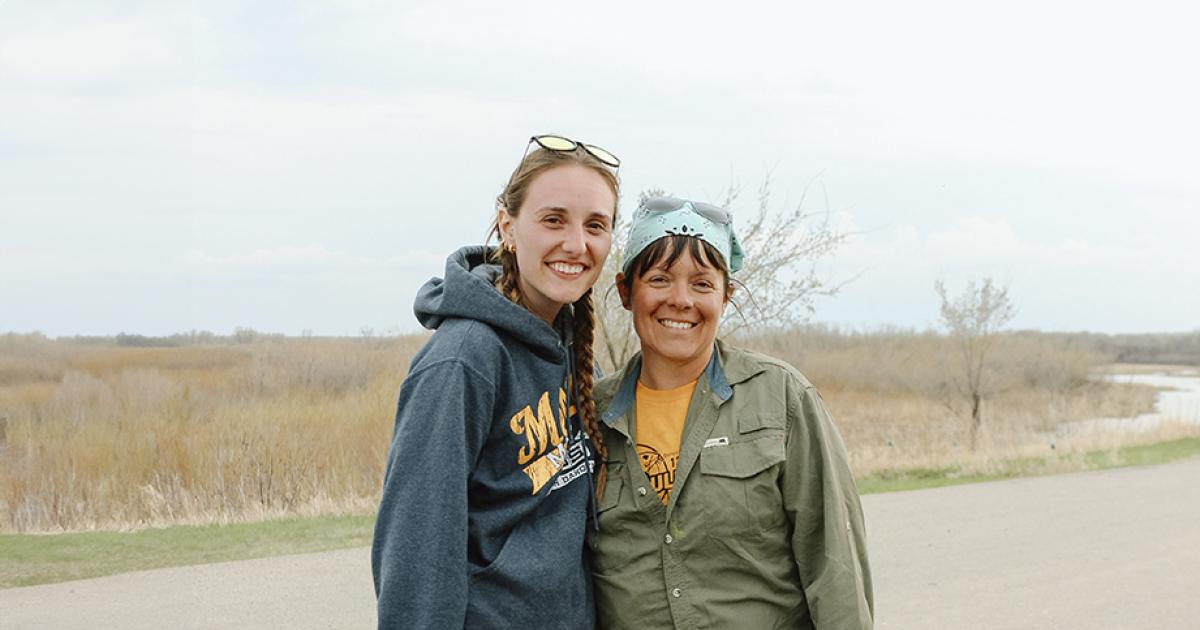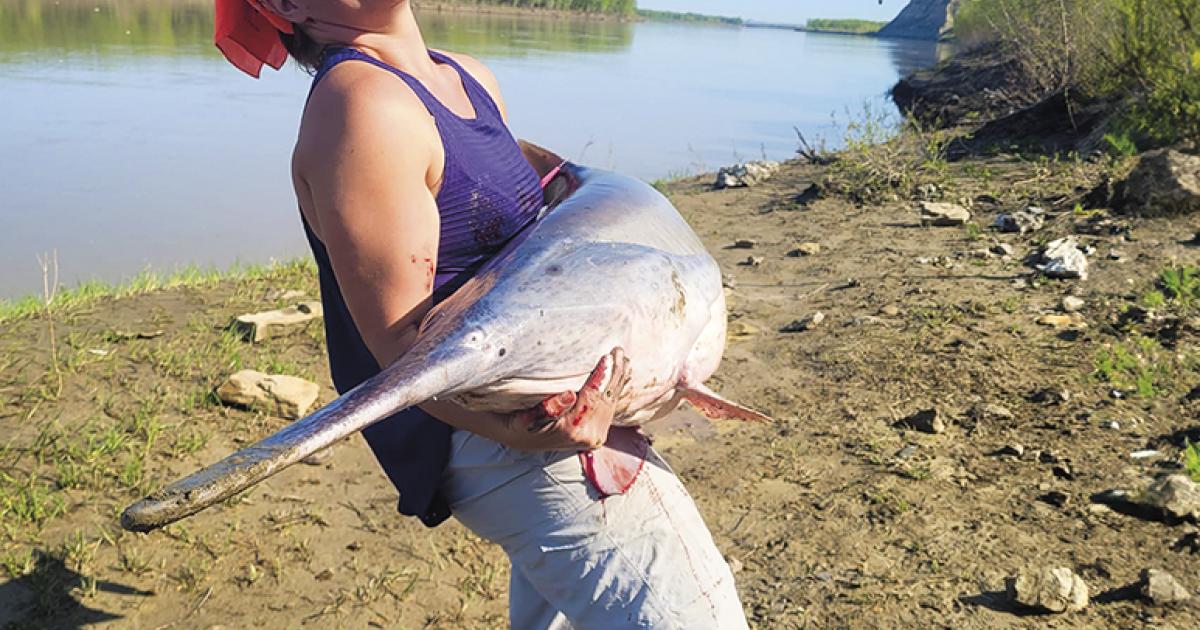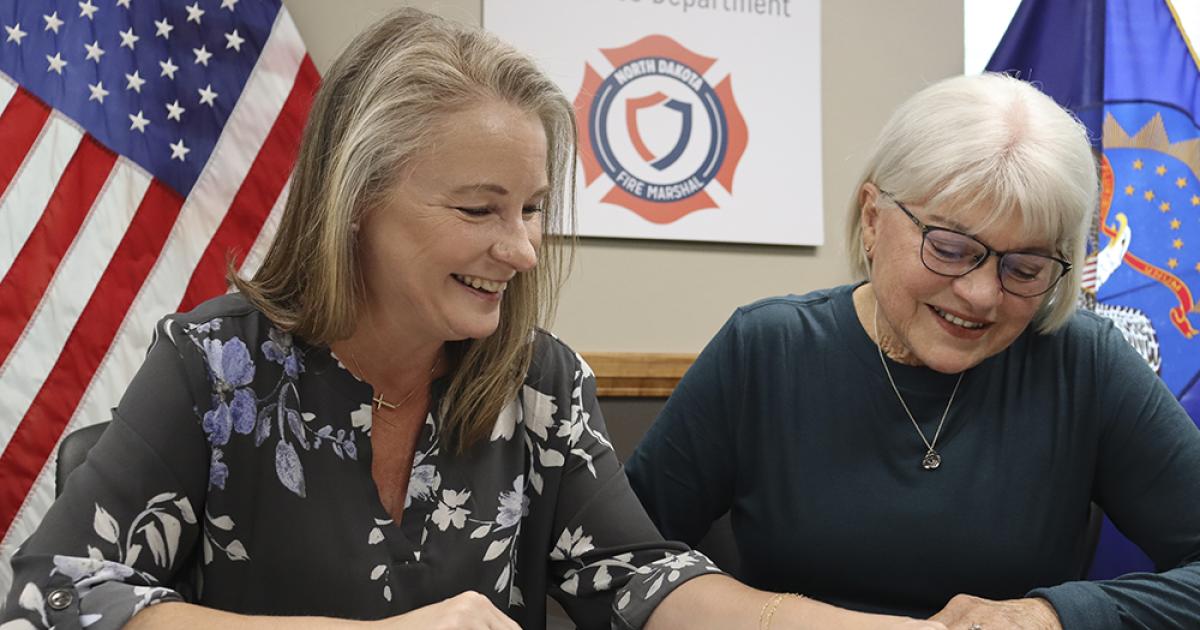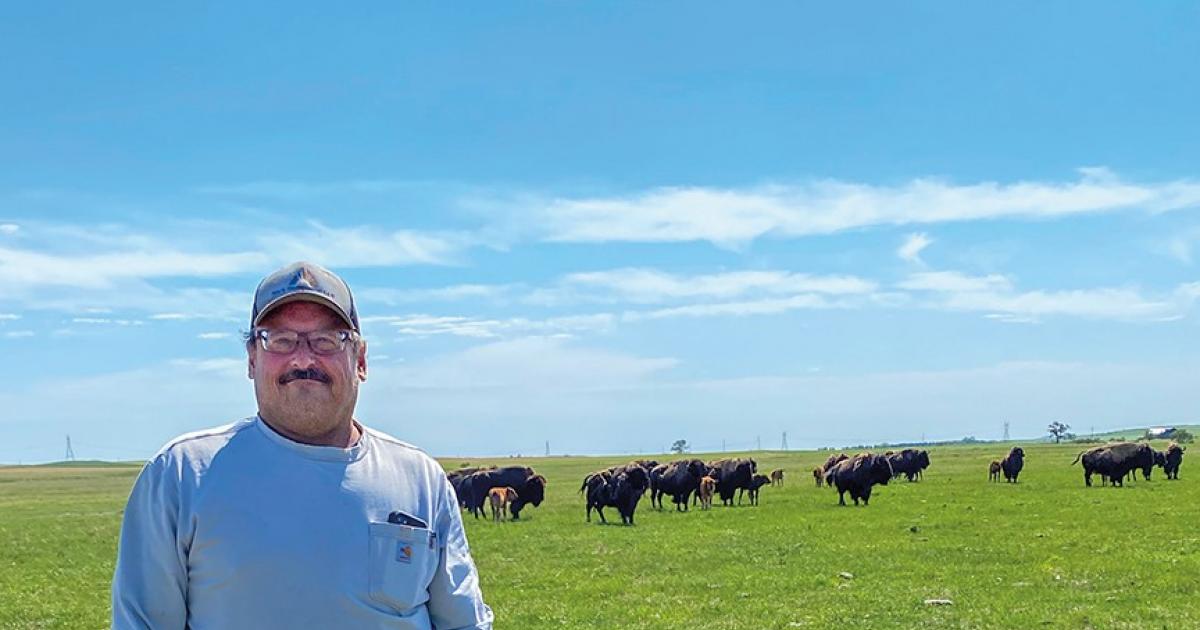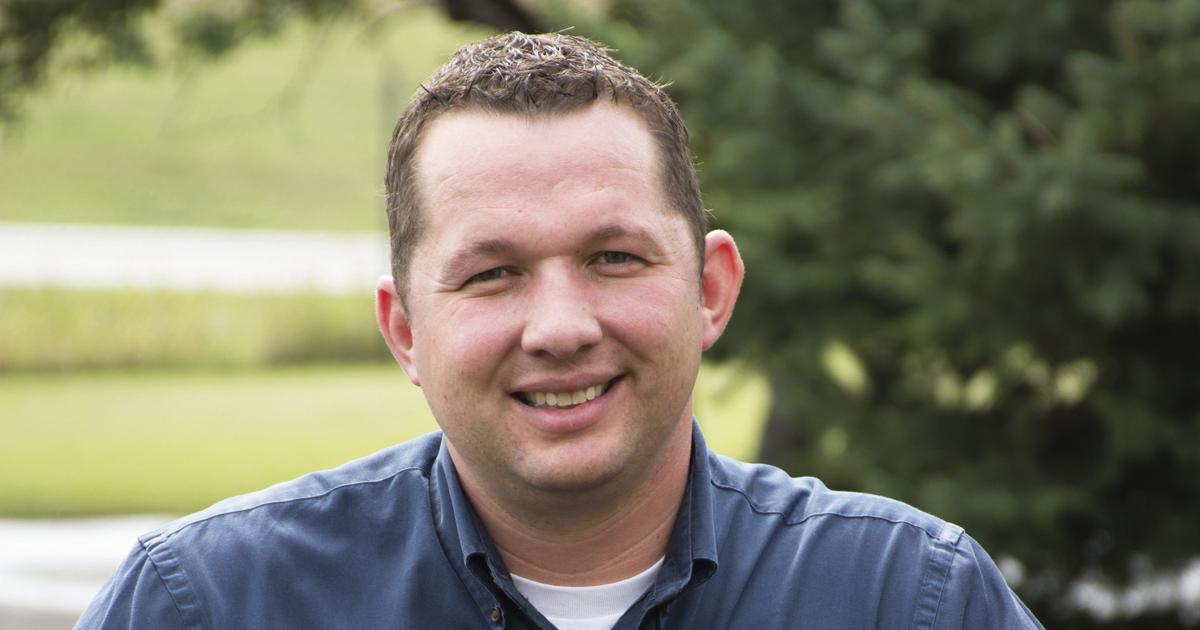Women fill tags and riverbanks during western North Dakota’s paddlefishing season
Hailey Beam and Emma Kleingartner spent the day paddlefishing on the far shore of the Missouri and Yellowstone rivers’ confluence last May, but with no luck. Photo by Erica Kingston
The clock ticks past 7 a.m. as the whooshing of casting lines simultaneously erupts. Plop. Plop. Plop. Hooks drop into the water as fishermen up and down the bank begin their pull-and-reel rhythms until their lines once again reach shore and it is time for another cast.
Every year, thousands of people pack the banks of the Missouri and Yellowstone rivers from Williston to the Montana border for their chance to tag a paddlefish – a prehistoric, smooth-skinned fish with a long bill that can grow up to 7 feet long and weigh over 100 pounds. In this early May season, conditions can range from snow to rain to blaring sun, leaving anglers to fish on the muddy riverbanks for hours and days at a time in close proximity for this physically demanding sport. Paddlefishing in western North Dakota is anything but clean and tidy.
Dispersed among the crowded banks of oilfield workers just off the clock, locals who staked their annual spots at 4 a.m. and thrill-seeking out-of-staters, women are also battling for the experience of reeling in a giant fish.
Randy Meissner, N.D. Game and Fish Department licensing manager, says 3,819 tags were sold in 2023 during the three-week paddlefishing season. Of those, 3,126 were sold to men and 18% – 693 tags – were bought by women.
SEEKING COMMUNITY AND EXHILARATION
Emma Kleingartner and Hailey Beam were two of those women. Coming from Ypsilanti and Jamestown, they traveled with their husbands and were part of a group of 15 fishermen hailing from parts of North Dakota, Michigan and Colorado – people they’ve met fishing in years past. Some stayed in hotels while others camped in tents or slept in their vehicles. The culture of community keeps them coming back year after year.
“That’s one of my things about why I come out here: lifelong friendships,” says Kleingartner, who has been paddlefishing for nearly a decade now. “We aren’t super close throughout the year, but we always come back here to do this together.”
Anglers rely on snagging to harvest paddlefish, as they mostly feed on zooplankton and do not take bait. In the spring, paddlefish swim upstream from Lake Sakakawea to spawn in the Missouri and Yellowstone rivers, coinciding with the snagging season. While there is some skill required, luck plays a big role. Kleingartner went home empty handed in her first two attempts.
“I said on the third year if I didn’t get anything, I wasn’t coming back,” she says.
Kleingartner was successful and brought in her first paddlefish on a snag-and-release day in her third year. Paddlefish can only be harvested and kept certain days of the season. While it remained in the water, Kleingartner estimated the large female weighed around 70 pounds. That same year, she snagged a smaller one on a keep day. Since then, Kleingartner has pulled in six keepers and a handful of others on release days.
Beam has fished with Kleingartner’s group the past two years, having the good fortune to fill her tag with a 30-pounder her debut year.
“Well, I technically got two, but the (first) one we didn’t gaff correctly,” Beam explains. Once paddlefish are brought close enough to shore, they are pierced and pulled in by a gaff, a long-handled pole with a large hook at the end.
“But the second one, Emma gaffed, and it was beautiful,” she says.
Both women agree there is nothing quite like the feeling of hooking a paddlefish. Through Kleingartner’s many travels and deep-sea fishing experiences, she hasn't found any fish that matches the exhilaration of battling a paddlefish.
“When you hook it, it just stops you dead,” Kleingartner explains. “It’s a super adrenaline rush, and then you reel as much as you can. But sometimes you just can’t, because they are just pulling so hard.”
The community aspect in paddlefishing begins once a fish gets snagged. Those along the shore reel up their own lines, so the fisherman who's hooked one can do the work to be successful. The bank quiets with anticipation, and many will offer advice and help with gaffing.
“You’re either onshore or in the trees and the bushes, and I don’t think you even process where you’re going,” Beam says. “You're focused and you’re just following what they say. You could be stepping on a cactus in bare feet and wouldn't have a clue.”
Although the fight is rarely longer than five to 10 minutes, it is intense and physical and can last upward of 20 minutes, if the fisherman is lucky enough to prevail without first snapping the line.
“Most people are really friendly and helpful,” Kleingartner says. “It’s usually encouraging even when it's crowded. People work together.”
Both women went home without filling tags after four days of fishing to start the 2023 season. Kleingartner and her husband, Alex, and their dog returned the following weekend, taking their boat, tackle and camping gear to a favored spot downriver. With the paddlefish finally moving, the Kleingartners filled their tags the next morning: Emma’s weighed 62.6 pounds and Alex’s was around 20 pounds.
QUALITY FAMILY TIME FOR LOCALS
Local women also take part. Growing up, Michele Moore remembers her mom bringing her siblings to watch the fishermen tirelessly trying to snag a paddlefish. In sixth grade, her class took a field trip to the rivers’ confluence, where she threw her first cast. But it wasn’t until she started dating her husband, Rob, a Williston local and lifelong paddlefisher, that Michele really took an interest.
“It’s a grueling sport,” Michele says. “The way your body gets sore.”
As a fitness coordinator for the Williston Parks and Recreation Department, Michele is no stranger to heavy lifting and exercise, which gives her a step-up during paddlefish season.
Michele has a piece of a pool noodle taped to the end of her pole for cushion. She will often leave a day of fishing – having cast for hours at a time – with blistered fingers, a chafed side and a tired body. Although her husband paces himself better, Michele admits, she will cast more times in a row. Her mantra, “I can’t catch a fish unless my hook is in the water,” keeps her pushing her limits.
“He knows at this point that I fish way harder than him,” Michele says. “He taught me how to do all of this stuff, the same as hunting. And I will go out more times than him. It’s a huge competition with myself. … I have a lot to prove to myself.”
The Moores began fishing together early in their marriage and would tent camp during the paddlefish season. Through the years, around work schedules and having kids, they continue to carve out time.
“Rob had found a spot. … He picked me up in the boat, we traveled to a little island and we saw the northern lights,” Michele recalls. “It was so nice. There wasn’t anyone around and I could mess up so horribly. It’s probably more the experiences that make you fall in love with the sport.”
Their sons, Kemper, 12, and Fletcher, 10, have grown up playing on the shore of the river as their parents fish. In 2020, when the crowds were less than usual, Michele began taking the boys out on her own. Now, with confidence in knot tying and snag fixing, she enjoys teaching her boys and heading out after school with girlfriends and their kids to get some fishing in before their husbands get off work.
“(Paddlefishing is) so fascinating – how don’t you drive out there and take part in it? How don’t you absorb this? This is one of the only places in the nation where we have this opportunity,” Michele says. “The experience of bringing your kids with, it’s worth it to let them experience it. The thrill on their faces when we caught one, it was so cool.”
Michele snagged her first paddlefish in 2018. She brought her biggest one ashore – an estimated 90-pounder – on a snag-and-release day in 2020. This past year, she filled her tag with a 25-pound paddlefish as her son recorded the excitement.
A sense of pride, excitement and sentimentality keeps those who wade the riverbanks to paddlefish coming back to western North Dakota year after year.
And for the 18% – the women crossing the river together in an old boat, calling for their kids playing in the mud at the close of day, standing next to one another, covered in mud and blood, teaching and encouraging each other and the next generation – the shared love of paddlefishing is muddy, messy and joyous.
___
Erica Kingston is a freelance writer and editor, oilfield wife and mother of four based in Williston. She can be reached at ekingmediawriter@gmail.com.


